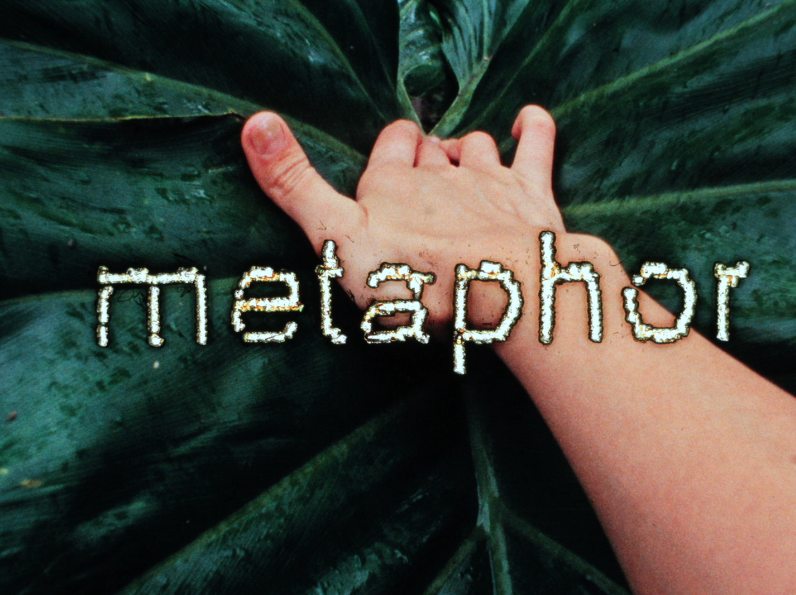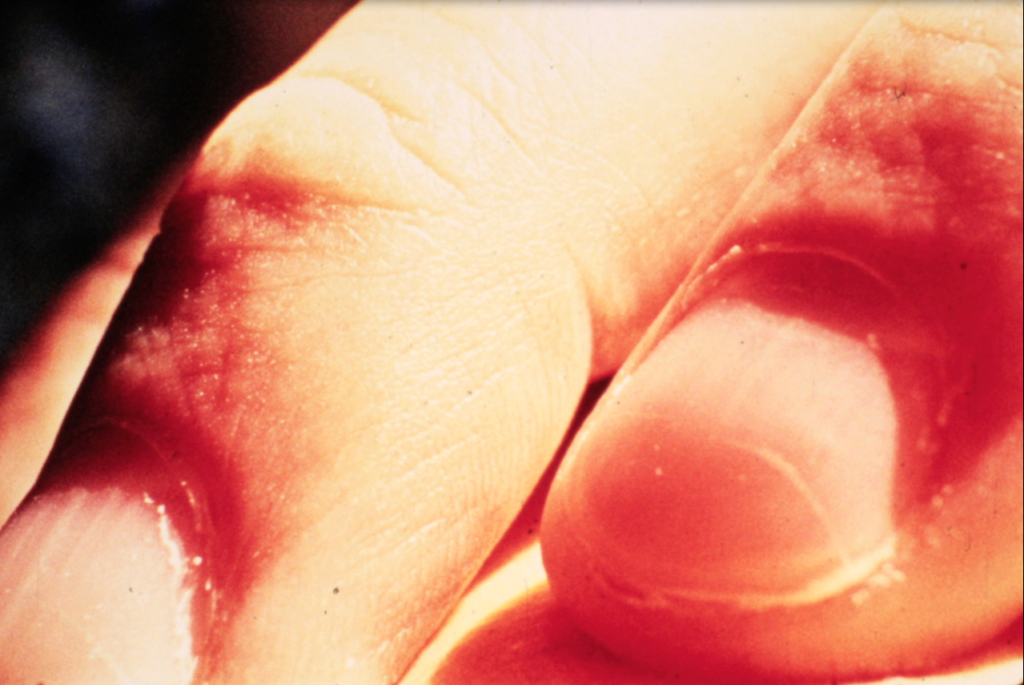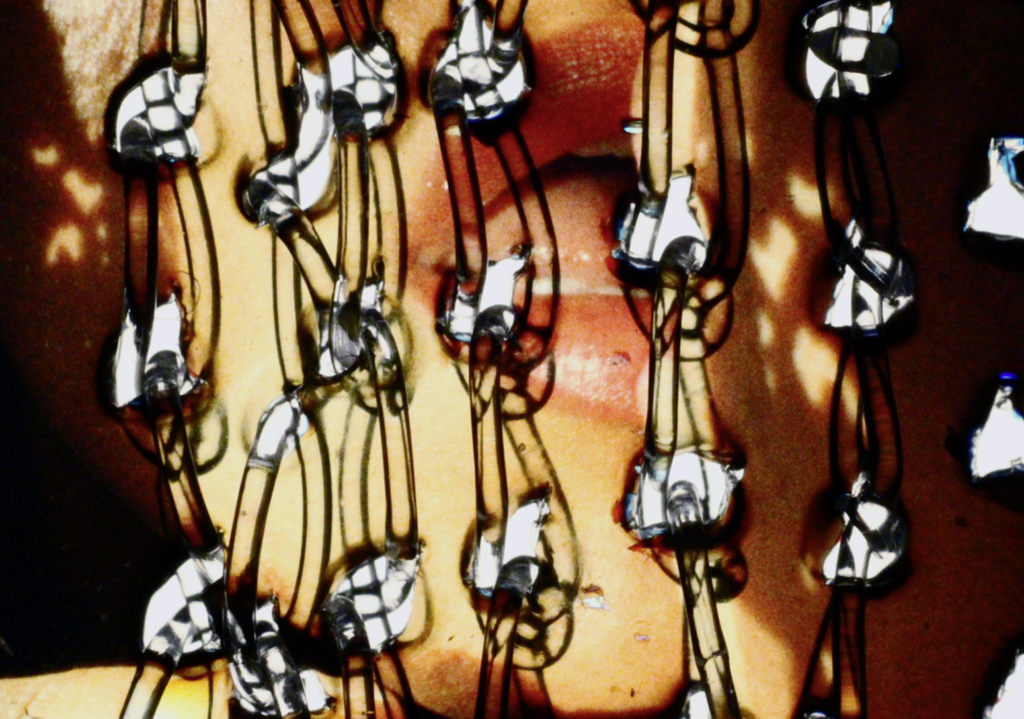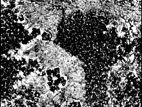New Artist Member: Nazlı Dinçel
Posted February 3rd, 2022 in Announcements, New Acquisitions, New Digital Files, New Films, News / Events

Canyon Cinema is thrilled to welcome Nazlı Dinçel to the collection! In addition, we’re pleased to announce that brand new 16mm prints of 10 of Nazlı’s films are now available from Canyon, along with digital files of all 10 titles.
Nazlı Dinçel (Turkey / USA) is a first-generation immigrant born in Ankara, Turkey. They studied at the University of Wisconsin-Milwaukee. Their films have screened at museums, festivals, and micro-cinemas around the world, including the MoMA and MoMI (NY), IFF Rotterdam, MuMok (Vienna), BAFICI (Buenos Aires), Hong Kong IFF, etc. Dinçel’s hand-made work reflects on experiences of disruption. They record the body in context with arousal, immigration, dislocation, and desire with the film object: its texture, color, and the tractable emulsion of the 16mm material. Their use of text as image, language, and sound imitates the failure of memory and their own displacement within a western society. Dinçel is recipient of The Helen Hill Award from the Orphan Film Symposium, Ann Arbor Film Festival’s Eileen Maitland Award, a Mary L. Nohl Fund Fellowship (2018), and a 2019-2020 Radcliffe Institute Fellowship at Harvard University. They live in Milwaukee, Wisconsin where they are building an artist-run film laboratory, part of a global network of collectives that work with analogue film.
Between Relating and Use (2018, 9 minutes, color, sound, 16mm or digital file)
Borrowing words from Laura Mark’s “Transnational Object” and DW Winnicott’s “Transitional Object”, this film is an attempt to ethically make work in a foreign land. Transitioning from assuming the position of an ethnographer, we turn and explore inwards – on how we use our lovers.
Instructions on How to Make a Film (2018, 13 minutes, b&w, sound, 16mm or digital file)
Shot at the Film Farm in Mt. Forest, this comedy is a quest about performance, educational voiceover, analogue filmmaking, ASCII, language, ethics of ethnography and narrative storytelling under a metaphor of instructions to farm land. Text by Barbara Kirshenblatt-Gimblett and Wikihow/shoot-film.
Shape of a Surface (2017, 9 minutes, color, sound, 16mm or digital file)
The ground holds accounts of once pagan, then christian and now muslim ruins of the city built for Aphrodite. As she takes revenge on Narcissus, mirrors reveal what is seen and surfaces, limbs dismantle and marble turns flesh.
Void (4. INABILITY) (2016, 4 minutes, color, silent, 16mm or digital file)
This is a re-destroyed film that I was unable to finish in 2013. Filmed both in ruins: at the Sutro Baths in San Francisco and in final domestic spaces occupied with a former partner. Film was destroyed in ocean water.
Solitary Acts #4 (2015, 8 minutes, color, sound, 16mm or digital file)
The filmmaker films herself masturbate the object of debate. She hears others claim her body, her habits: those in her conservative surroundings as a child. The viewer claims her as well, by watching her in this private act. She is 9 years old, then 12. She observes popular icons, dismissing the agency of their body: with some teenage angst, denies climax to everyone else but herself.
Solitary Acts #5 (2015, 5.5 minutes, color, sound, 16mm or digital file)
The filmmaker films herself practice kissing with a mirror. She recalls teenage memories of overconsumption, confusing oral fixations (kissing and eating). She ends up eating the carrot she is masturbating with, and she feels a sense of cannibalism. The components of the background of the scene are broken down and filmed in extreme closeups. These wave and play with one another: when text over-consumes the image it transforms into the backdrop fabric where the filmmaker physically attaches the film together with fishing line.
Solitary Acts #6 (2015, 11 minutes, color, sound, 16mm or digital file)
This is a feminist critique of the Oedipal complex. The filmmaker recounts an abortion she had in 2009. The aborted child survives and becomes her lover. Her subject is filmed in a private act, complicating what could be an act of the solitary. There are three parts in the film. First is a recount of the child’s earliest sexual memory, similar to the filmmaker’s in Solitary Acts #4. The text is hammered on the film with letter punches. Second is a letter written to the filmmaker from her subject, being read by the filmmaker. The image is punched out with a leather puncher and carefully replaced into black leader with tweezers. A pop song from 2009 is used, the one the filmmaker heard while driving in the taxi from her abortion. Third is a letter that the filmmaker wrote, being read by the subject. In this third part the audio is broken apart and the letter is reversed, mimicking the reverse masturbation(the image).
Her Silent Seaming (2014, 11 minutes, color, sound, 16mm or digital file)
A transcription of what I have been told during intimate experiences while separating from my husband. Sections consist of destroyed originals from Leafless (2011), motifs of the “feminine” alluding to Jack Smith’s Flaming Creatures (1963) and of reconstruction of a pomegranate. These decorative objects are re-valued through a controlled act of cutting, with an allusion to synchronization. Obscured images clear out while the hand scratched text becomes harder to read with each section. Direct sound of cuts and hand processing are composed of 26 frame shots. Un-synced, it reveals a hearing of past images, as an act of translation.
Leafless (2011, 8 minutes, color, silent, 16mm or digital file)
Leafless is a poem of textures about becoming familiar with a significant other’s body in reservation with its landscape.
Reframe (2009, 4 minutes, color, silent, 16mm or digital file)
8 stereoscopic slides taken to the jk-104 optical printer, shot frame by frame. This is the first hand processed color film I’ve made. The slides were found at a thrift store in Milwaukee, WI in 2009. They are of Cuba between 1948 and 1950 taken by an army officer while accompanied by his family. Their touristic gaze is reclaimed, by fragmenting their photographs into new possibilities of the frame, and reviving the bodies that may have perished by the revolution in 1952.












